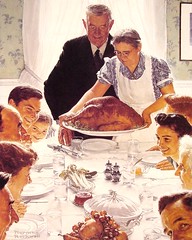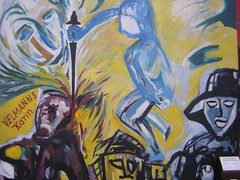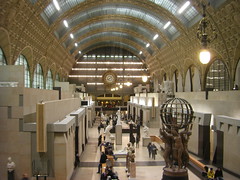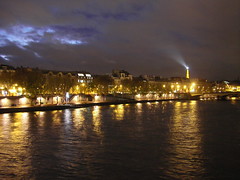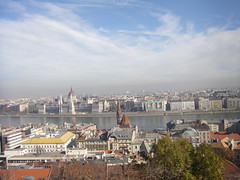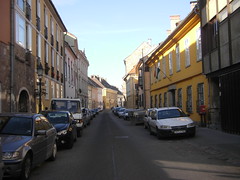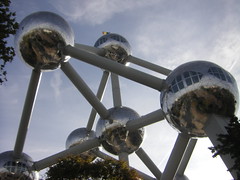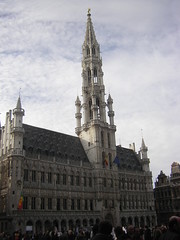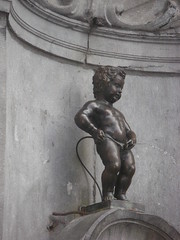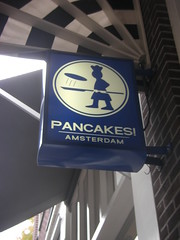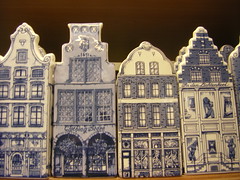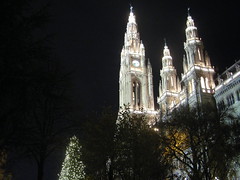 |
| Vienna's City Hall. |
"Do you know where the nearest docking station is?"
A man had spotted my Vienna Citybike, which I had rented with the municipal bike sharing program, and he seemed unfamiliar with this part of town. I was stopped in front of the Vienna City Hall to take a picture of the building, struggling to use the handlebars of the bike as a tripod. It was around 9:30 on a Saturday night.
"No, I'm not from here, sorry," I replied, wondering how he knew I didn't speak German.
"Ah, so you're not a Wiener. Welcome," the man replied in English, but with an Austrian accent that hinted that English was not his first language. No, I'm not a Wiener, but I wish I was. Vienna is a fantastic city. My desire to live there is apparently reflected in the happiness of the Viennese, as the city frequently tops quality of life surveys conducted to compare cities around the world. All the buildings are beautiful, the people are friendly, and the city is lively during the day and at night. Even on Sunday, when all the stores are closed, the people of Vienna come out to walk their dogs (Because, it seems, everyone in Europe has a dog) or grab coffee on Kärntner Straße, Vienna's main shopping street.
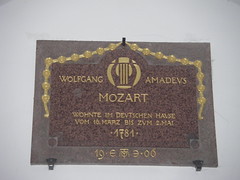 |
| Mozart lived here! |
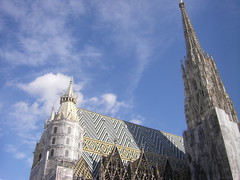 |
| The colorful roof and sharp spires of Stephansdom |
It's a fun city to walk around in, taking in the
frankfurter stands and pretty mosaic patterns on the buildings and the giant museums and palaces that take up quite a bit of space in this culturally rich city. Vienna is home to one of the world's oldest Ferris Wheels, the Wiener Riesenrad. Hofburg Palace, home of the president of Austria and former home of the Hofburg Emperors, is enormous. The palace has been the Austrian government headquarters for over 700 years.
Stephansdom is a giant cathedral right in the center of Vienna with a very colorful roof. Vienna's beautiful sights and lively people just might make it the best place I've been so far on this trip.
Prague is a long train ride from Vienna. Four hours after racing through the dark Czech countryside, however, the city lights were glowing out the window, and I knew I was close.
 |
| Typical Prague street in the old part of town. |
Prague gets a lot of hype. Both professional travel writers and just regular adventurers sharing experiences online call its beauty almost fairytale-like and encourage others to see this great city, which, like Budapest, but to more of an extreme, has quickly become a colorful tourist destination after being part of the USSR for so many years. People I met in the Vienna hostel all agreed that Prague is very beautiful, one backpacker even called it her favorite destination in Europe.
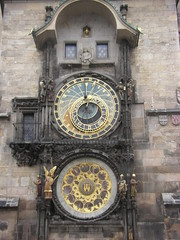 |
| The Prague Astronomical Clock, made in 1410, was considered cutting-edge technology when it was built. Now I can't even figure out how to use it. |
Without a doubt, Prague is beautiful. Old Town Square is home to a 500-year-old, still-functioning clock that I still haven't figured out how to read and the old town hall and a church, all of which are pretty. The Prague Castle offers magnificent views of the city from across the river, in a similar fashion to Budapest.
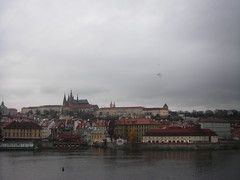 |
| Prague castle up on the hill. |
It's all really pretty, with the small streets and red roofs and vendors selling food cooked over an open charcoal fire in the square, but I don't think it's the best place in Europe. Souvenir shops dominate many of the streets in the Old Town section, and tourists don't feel as welcome here as they do in Vienna. Prague is nice, Prague is pretty, but Prague just isn't as good as everyone says it is. And the exchange rate of 17 Czech Koruna to 1 US Dollar makes for some tough math.
